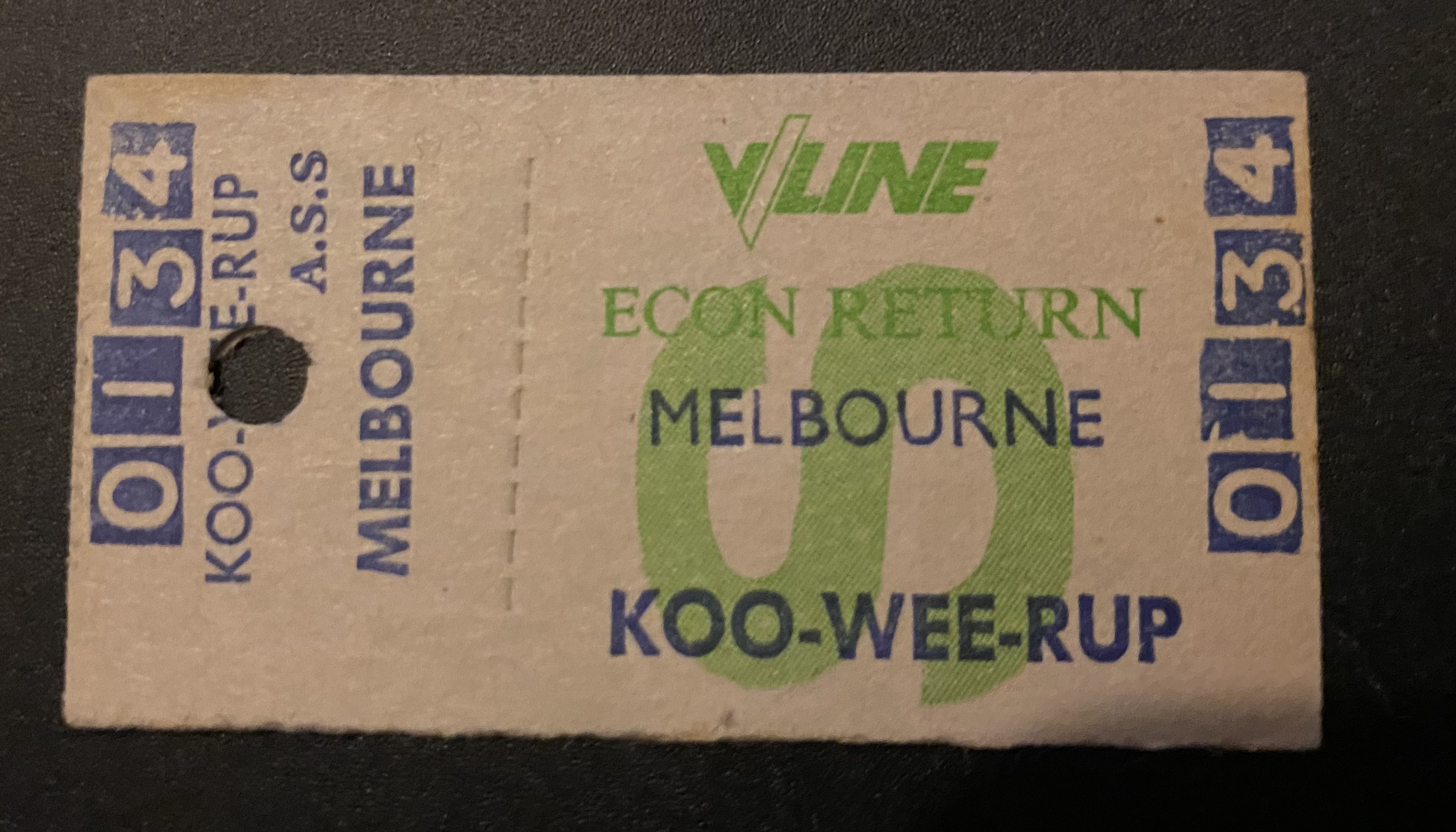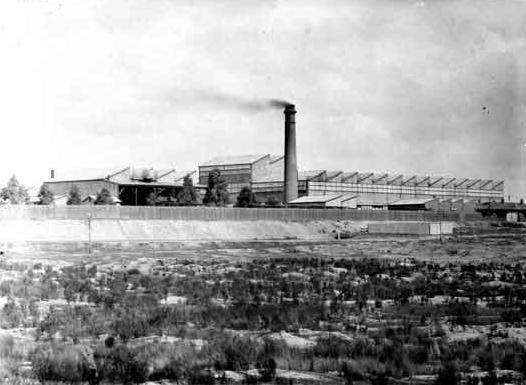|
DRC Railcar
The DRC (Diesel Rail Car) was a class of railmotor operated by the Victorian Railways on its country rail network in Victoria, Australia. The cars were built by Tulloch Limited in New South Wales, and featured aluminium and steel construction, air-conditioning, and twin diesel engines with hydraulic transmissions. History The first railcars of this type were built in 1970 for the New South Wales Government Railways as 1200 class railcars. The Victorian Railways decided to order two railcars of the same design, to replace the 280hp Walker railmotors then in use. The first DRC entered service in May 1971, classified DRC40, followed by DRC41 on November 1971. The NSW fleet suffered numerous failures in service, and by 1974 the NSW Public Transport Commission had decided to withdraw the cars from service. Eight of them were converted to loco-hauled carriages in 1982, and used on the ''South Coast Daylight Express'' until January 1991, and on Moss Vale and Goulburn services unti ... [...More Info...] [...Related Items...] OR: [Wikipedia] [Google] [Baidu] |
Seymour Railway Heritage Centre
The Seymour Railway Heritage Centre (SRHC) is a railway preservation group based in Seymour, Victoria, Australia. The volunteer non-profit incorporated association was established in 1983 as the Seymour Loco Steam Preservation Group to restore and preserve locomotives and rolling stock as used on the railways of Victoria. The group is an accredited railway operator under the Victorian Rail Safety Act 2006, permitting it to move trains within its own depot. The group is also accredited to maintain and provide rolling stock on the Victorian railway network,V/Line: Network Service Plan - Addenda (5 December 2007) (NA_NSP_03 – R40) running s, |
Public Transport Commission
The Public Transport Commission (PTC) was an agency of the Government of New South Wales responsible for the provision of rail, bus and ferry services in New South Wales, Australia from October 1972 until June 1980. Upon dissolution, responsibility for rail services transferred to the State Rail Authority and responsibility for bus and ferry services to the Urban Transit Authority. The PTC, composed of five Commissioners appointed by the Governor of New South Wales, was accountable to the Minister for Transport. Structure The PTC was established pursuant to the and led to the abolition of the offices of Commissioner for Railways and Commissioner for Public Transport. The Act facilitated the merger of the Department of Railways and the Department of Government Transport, the latter being the agency that operated government bus services in Sydney and Newcastle. In December 1974, the dissolved the Sydney Harbour Transport Board and ferries were added to PTC's responsibility ... [...More Info...] [...Related Items...] OR: [Wikipedia] [Google] [Baidu] |
Daylesford Spa Country Railway
The Daylesford Spa Country Railway (which is operated by the Central Highlands Tourist Railway) is a volunteer-operated gauge tourist railway located in Victoria, Australia. It operates on a section of the closed and dismantled Daylesford line, and currently runs services between Daylesford and the hamlet of Bullarto. History Victorian Railways era The original line was opened in two stages, from the mainline junction at Carlsruhe to the town of Trentham, on 16 February 1880. The remainder of the line was opened a month later on 17 March. The line initially had significant goods and passenger traffic, with 50,000 passengers travelling the line in 1884 alone. However, over the next seventy years, both traffic and the quality of line gradually degraded, until the last passenger service was replaced with a road coach in 1978. Reopening as a tourist railway The Central Highlands Tourist Railway was founded two years later, and set about restoring the railway to operating condi ... [...More Info...] [...Related Items...] OR: [Wikipedia] [Google] [Baidu] |
V/Line Sprinter
The Sprinter is a diesel railcar built by A Goninan & Co in Broadmeadow, NSW for V/Line between 1993 and 1995. Design origins The Sprinter concept dates back to 1989, when the Public Transport Corporation, having seen a substantial increase in patronage and reduction in costs following the introduction of faster, more frequent services as part of the New Deal for Country Passengers program of the 1980s, required additional train capacity to meet demand. Initial talks suggested an order for 24 new vehicles, though the tenders for the construction of the 22 railcars closed in November 1989. At the time they were designed to supplement locomotive-hauled H type carriage sets on shorter runs (such as on the outer suburban Melton and Sunbury lines, as well as the interurban Geelong and Seymour lines) and thus provide faster and more frequent service to Melbourne's fringe areas, and indirectly (primarily by freeing up other rollingstock) to more distant regions. Their introducti ... [...More Info...] [...Related Items...] OR: [Wikipedia] [Google] [Baidu] |
South Gippsland Railway Line
The South Gippsland railway line is a partially closed railway line in Victoria, Australia. It was first opened in 1892, branching from the Orbost line at Dandenong, and extending to Port Albert. Much of it (the section up to Leongatha) remained open until December 1994 (passenger services finished the previous July). Today, only the section between Dandenong and Cranbourne remains open for use. The section of the line from Nyora to Leongatha was used by the South Gippsland Tourist Railway until it ceased operations in 2016. The section from Nyora to Welshpool, with extension trail to Port Welshpool and a portion of the former line at Koo Wee Rup, have been converted into the Great Southern Rail Trail. History The Melbourne and Suburban Railway Company opened a line from Princes Bridge railway station to Punt Road (Richmond) and South Yarra in 1859 and extended to Dandenong in 1879. The South Gippsland railway line was opened from Dandenong to Cranbourne in 1888 and extended ... [...More Info...] [...Related Items...] OR: [Wikipedia] [Google] [Baidu] |
Stony Point Railway Line
The Stony Point line is a greater-metropolitan railway line in Melbourne, Australia. The line extends from the Frankston line and is part of the city's suburban passenger railway network, and the Myki integrated ticketing system (Zone 2), but is not electrified like the rest of Melbourne's rail network. It has operated with a variety of rolling stock, and was the last suburban service in Australia to be operated by a locomotive hauled train. The line is also used by freight trains serving the Long Island steel mill in Hastings. Services Passenger services are run as a shuttle service between Frankston and Stony Point, with passengers from Flinders Street required to change at Frankston station. It is the only non-electrified line operated by Metro Trains, which operates Melbourne's suburban heavy rail network. Since 27 April 2008, services have been operated using Sprinter diesel multiple units leased from V/Line, replacing the previous A class locomotive hauled tr ... [...More Info...] [...Related Items...] OR: [Wikipedia] [Google] [Baidu] |
Hamilton Railway Station, Victoria
Hamilton is a railway station located on the Ararat - Portland railway in the town of Hamilton, Victoria, Australia. Today the station is now used only for through trains, and the large station building is used only to serve bus passengers, although the disused platform remains in reasonable condition. History The railway to Hamilton opened in October 1877, in December that year the line was extended south to the final terminus of Portland. Hamilton became a major railway station with extensive freight facilities and was the junction for several branch lines: * To Coleraine opened in 1888. * To Penshurst and Koroit in 1890. * To Cavendish in 1915, extended to Balmoral in 1920. The first two branch lines left the main line at Coleraine Junction, located a short distance south of Hamilton station itself. By 1934 the station had a main platform facing the main line, opposite a crossing loop, and a dock platform at each end of the main platform. The goods yard had six roads ... [...More Info...] [...Related Items...] OR: [Wikipedia] [Google] [Baidu] |
Ararat Railway Station
Ararat railway station is located on the Serviceton and Western standard gauge lines in Victoria, Australia. It serves the town of Ararat, and it opened on 7 April 1875.Ararat Vicsig The station serves as the for 's Ararat line services. It is also the for the [...More Info...] [...Related Items...] OR: [Wikipedia] [Google] [Baidu] |
Harris (train)
The Harris trains were the first steel-bodied Electric Multiple Unit train to operate on the suburban railway network of Melbourne, Victoria, Australia. They were introduced in 1956, by the Victorian Railways, and last operated in 1988, although a number of the carriages were converted for other uses and are still operating. They were named after Norman Charles Harris, Chairman of Commissioners of the Victorian Railways, between 1940 and 1950. Description The Harris trains were commonly referred to as "Blue Trains" due to their deep blue colour, with only a yellow band about halfway up the body. Royal blue and yellow were common colours for the Victorian Railways rolling stock. The trains had a saloon seating layout, divided into smaller sections by full-height partitions. They were provided with either two or three sets of hand-operated dual sliding doors per carriage side. Later sets were fitted with power doors. Interiors were split into smoking and no-smoking compartments ... [...More Info...] [...Related Items...] OR: [Wikipedia] [Google] [Baidu] |
Bendigo Workshops
Bendigo Workshops is a railway workshop located in the provincial city of Bendigo, Victoria, Australia. They are located in the north of the city beside the junction of the Piangil and Deniliquin lines. The site covers 10.3 hectares of land and has 31 separate buildings, including a 10,000 sqm main workshop building and 6 kilometres of railway track. History The workshops were opened in November 1917 by the main rail operator in Victoria, the Victorian Railways. They were opened in response to political pressures from provincial groups for decentralisation, with the Victorian Railways preferring the cheaper option of expanding the existing Newport Workshops in suburban Melbourne. Furthermore, unemployment had risen in both Bendigo and Ballarat due to a decline in mining operations.''A Job for Life'' Thomas, Graham Australian Railway Historical Society Bulletin, May;June, 1998 pp176-187;203-215 The main work carried out was repairs and maintenance of existing wagons and locomotives ... [...More Info...] [...Related Items...] OR: [Wikipedia] [Google] [Baidu] |
Railway Digest
''Railway Digest'' is a monthly magazine, published in Sydney, covering contemporary railways of Australia. Overview The magazine's publisher is the Australian Railway Historical Society (ARHS), NSW Division. The first issue was published in March 1963 under the name ''New South Wales Digest'' and regular publication commenced with the May 1963 edition. It was renamed in January 1983. In January 1985 it changed paper size from SRA5 to A4. Originally an enthusiast magazine mainly focusing on reporting day-to-day workings of the New South Wales Government Railways and it successors, it was produced by volunteers using a hand-operated duplicator at the home of one of its members. In May 1993, a paid editor was appointed and the magazine's focus gradually shifted to reporting news from across Australia. It has evolved into a professional full-colour production directed at the wider community and commercially distributed to newsagents throughout Australia."Adapt or disappear - the ... [...More Info...] [...Related Items...] OR: [Wikipedia] [Google] [Baidu] |







